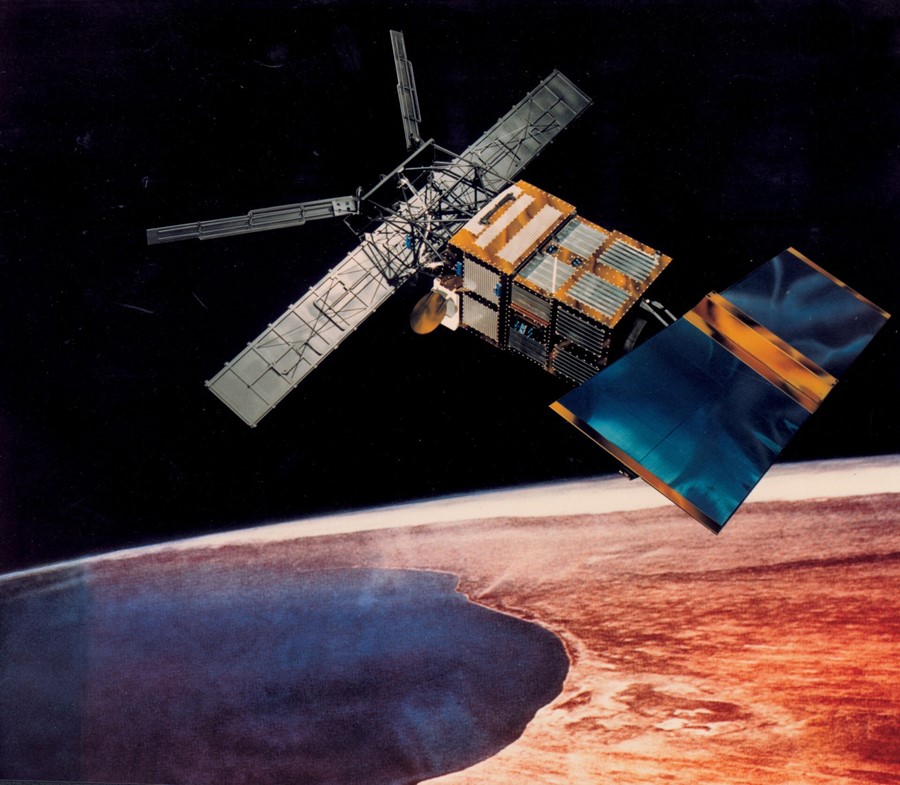The European Space Agency isn’t quite sure where the wreckage of its ERS-2 satellite will land
The vehicles and machinery that we blast into space often have a limited lifespan. Multimillion-dollar missions have been brought to an end by everything from martian dust storms, to flat batteries, to computer glitches (it’s not so easy to turn your machine off and on again when it’s beyond Earth’s atmosphere). Others are granted a more graceful end, like the European Space Agency’s (ESA) ERS-2, which was intentionally switched off by its operators back in 2011. So why is it now tumbling down to Earth?
Originally conceived as a tool for monitoring weather back on Earth – including melting ice caps, warming oceans, flooding, earthquakes, and all the other stuff than many people would rather ignore – ERS-2 was the most sophisticated European satellite of its kind when it was launched back in April, 1995. On February 14, 2024, however, the Australian imaging company HEO snapped some grainy black-and-white photos of it plummeting back toward our planet.
Naturally, these images raised some questions. Most importantly: where exactly is this huge hunk of metal – said to weigh around 2,300 kilograms once it’s depleted its fuel – going to land? And when? And is there any chance it could get here sooner? Luckily, ESA has some answers.
In an FAQ on ERS-2’s reentry into Earth’s atmosphere, the space agency explains that that it knocked the satellite out of orbit on purpose, as part of a mission to clear up the masses of space junk that now orbit our home planet. “Deorbiting satellites at the end of their life and ensuring they reenter Earth’s atmosphere is a fundamental tool in keeping our busy space highways clear from defunct, lingering satellites,” it explains, “preventing collisions in orbit, and mitigating the creation of further space debris.”
For this reason, steps were taken to deorbit ERS-2 in 2011, after 16 years of successful operations. These manoeuvres used up its remaining fuel and lowered it to a point where there was no risk of it bumping into anything else. Then, it was just a case of waiting for its orbit to shrink enough to bring it deeper into our atmosphere.
ERS-2 spotted! 📸🛰️
— ESA Operations (@esaoperations) February 19, 2024
The ESA satellite is on a tumbling descent that will lead to its atmospheric reentry and break up this week.
These images of ERS-2 were captured by @heospace for @spacegovuk using cameras on board other satellites.#ERS2reentrypic.twitter.com/GTuubP6apJ
When it reaches around 80 kilometres from Earth’s surface – which is scheduled to happen this week – the satellite should break up into smaller fragments, which will then burn up in the atmosphere. There is a chance that some of these fragments will actually reach the surface, but they won’t contain any toxic or radioactive substances, and there’s a high chance they’ll fall in the ocean. For context: the annual chance of a human being being injured by space debris is less than one in 100 billion. Investigations into potential atmospheric pollution from reentries are ongoing, though the short-term impact is thought to be “modest”.
Unfortunately, ESA can’t provide much more information about the reentry process, like exactly when or where the satellite will break apart and burn up. This is partly because of unpredictable solar activity (the kind that also threatens to kill the internet), which can change the texture of the atmosphere, and therefore alter the satellite’s orbit.
“The satellite is under frequent observation, and we are tracking its orbital altitude as it decays,” says ESA, adding that it is working with an international network of partners to provide updates as the moment approaches.




